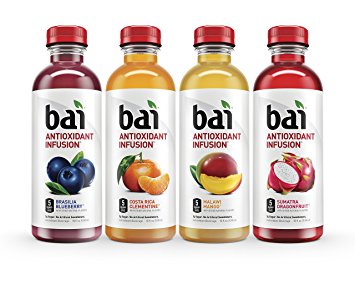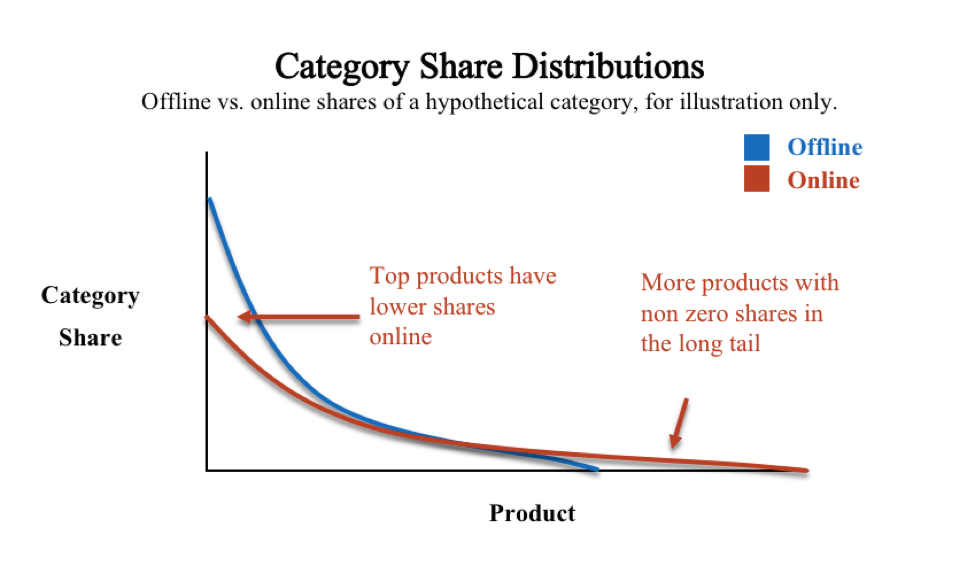
“Bigger is better.” That’s what we’ve been taught throughout life, right? The brands with the bigger distribution network and the bigger marketing budget always win. I mean, always.
But the dynamics of eCommerce are flipping that rule on its head. In fact, in many ways small brands have a natural advantage for winning on websites such as Amazon, as we have seen countless times through our tracking of fast-moving products on Amazon.
In the Deodorant and Antiperspirant category on Amazon.com, big names like Dove and Old Spice top the best-selling brands in our latest Amazon FastMovers report (which ranks the 100 best-selling products in August 2017) – however natural deodorant brand Schidmt’s Deodorant is also one of the top five best-selling brands in the category.
Why do small brands have an advantage online? There are four key dynamics at play.
1. Lower barriers to entry
Amazon’s endless aisle lowers the barriers to entry and redistributes category shares from big brands to the long tail of brands.
With more products sold on Amazon – particularly in the “long tail” of low-selling products – the distribution of shares is flatter. Shares of top brands and manufacturers are depressed; shares of those products in the long tail that would otherwise have no major distribution and few sales are elevated.
Given the different structural dynamics, a big brand selling on Amazon should not, at least initially, expect to match its offline share.

2. Search advantages
A small brand’s limited distribution actually creates an advantage for it online. That’s because the more easily accessible an item is offline, the less likely it is to be purchased on Amazon. In contrast, shoppers have been trained to search Amazon for the items they want but can’t find in-store, using specific branded key words versus “general terms” that are more competitive and will naturally show a larger set of results.
Consider Soylent, a venture-backed meal replacement product sold exclusively on Soylent.com and Amazon.com. The search term “Soylent” was the third most frequently-searched keyword in Amazon’s Grocery department in August 2016 – an indicator of significant preexisting demand and, perhaps, sales. It was searched more often than apparently ubiquitous terms like “popcorn,” “snacks,” and “chocolate.
Bai, a fast-growing but still small beverages brand with national distribution, also fared very well in the search rankings. A Bai-specific keyword was the 16th most frequently searched term in Grocery.

As a shorthand exercise, we can assess a small brand’s success with branded terms with two simple factors: 1) how frequently its brand terms are searched on Amazon (search frequency); 2) how many of that brand’s products show up for that search term (share of page one results).
If a branded search term is rarely searched by shoppers, it won’t move the needle on the brand’s share. And if competitors’ products show up first for the search, that small brand is losing its shoppers to its competitors.
3. Small brands often have shorter R&D cycles and can tailor future products, or focus attention on, types of products that have accelerating consumer demand
That accelerating consumer demand takes the form of increasing search frequencies for certain types of general category keywords like “paleo bars”.
In our podcast with Instanatural’s Melissa Menchaca, a beauty brand that was born on Amazon and which remains its primary and distribution platform, Melissa explains why R&D can be much faster on Amazon:
“We are very lean, we’re nimble, we’re fast- acting and this is what really sets us apart from other big name brands out there in the world. We’re able to gauge consumer interest about products and get that product to market faster than our P&G competitors. That’s a huge, huge leverage that we have that also Amazon works into as well because it’s so easy to launch new products into Amazon. It’s a virtual catalog. You really can’t go many other places and launch as many products as we have.
4. Certain niche brands have historically out-executed big brands on Amazon due to an exclusive and relentless focus on the platform
Without category incumbency or the risk of channel conflicts, they’re on offense with nothing to lose.
Conclusion
Clearly, eCommerce is having a levelling affect, giving small brands a chance to use a little “jujitsu” and turn a big brand’s size into a weakness.
So does this mean big brands have to sit back and idly watch as these small brands win?
No, there are things big brands can do to fight back against small brands. And that’s the discussion for next week’s blog. Stay tuned!
You might also be interested in subscribing to our free Amazon FastMovers reports, which rank the best-performing brands across key categories on Amazon.


























